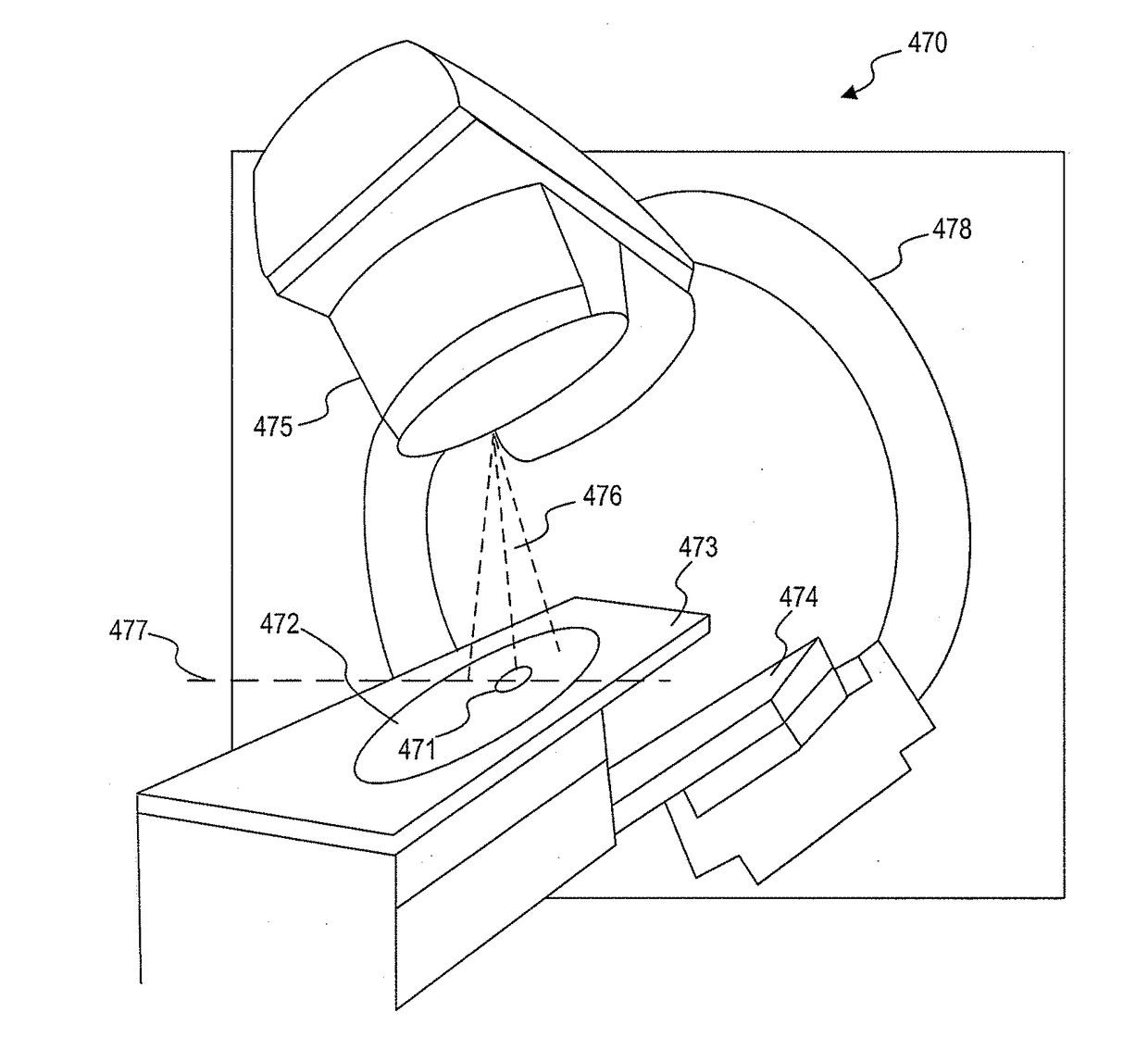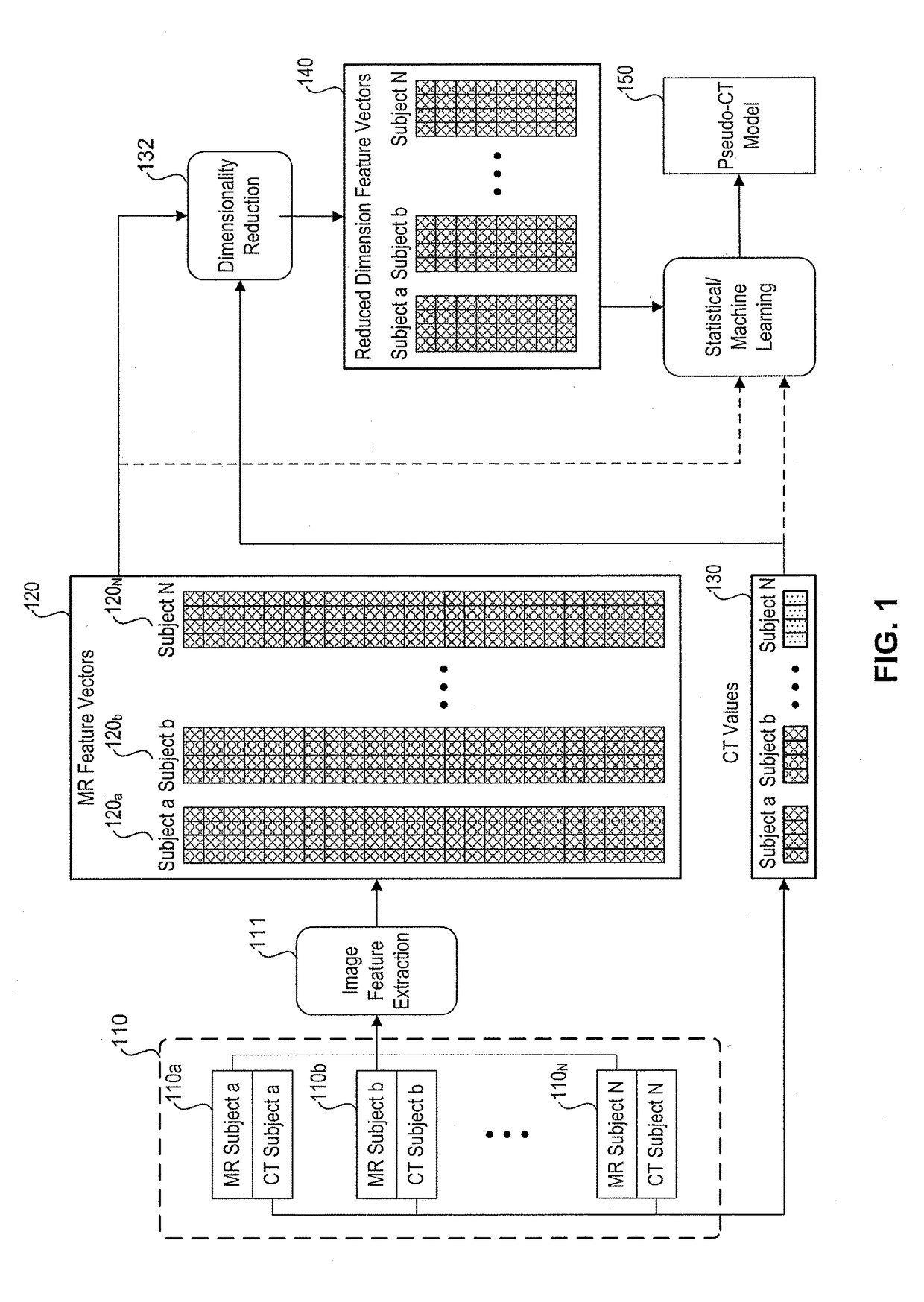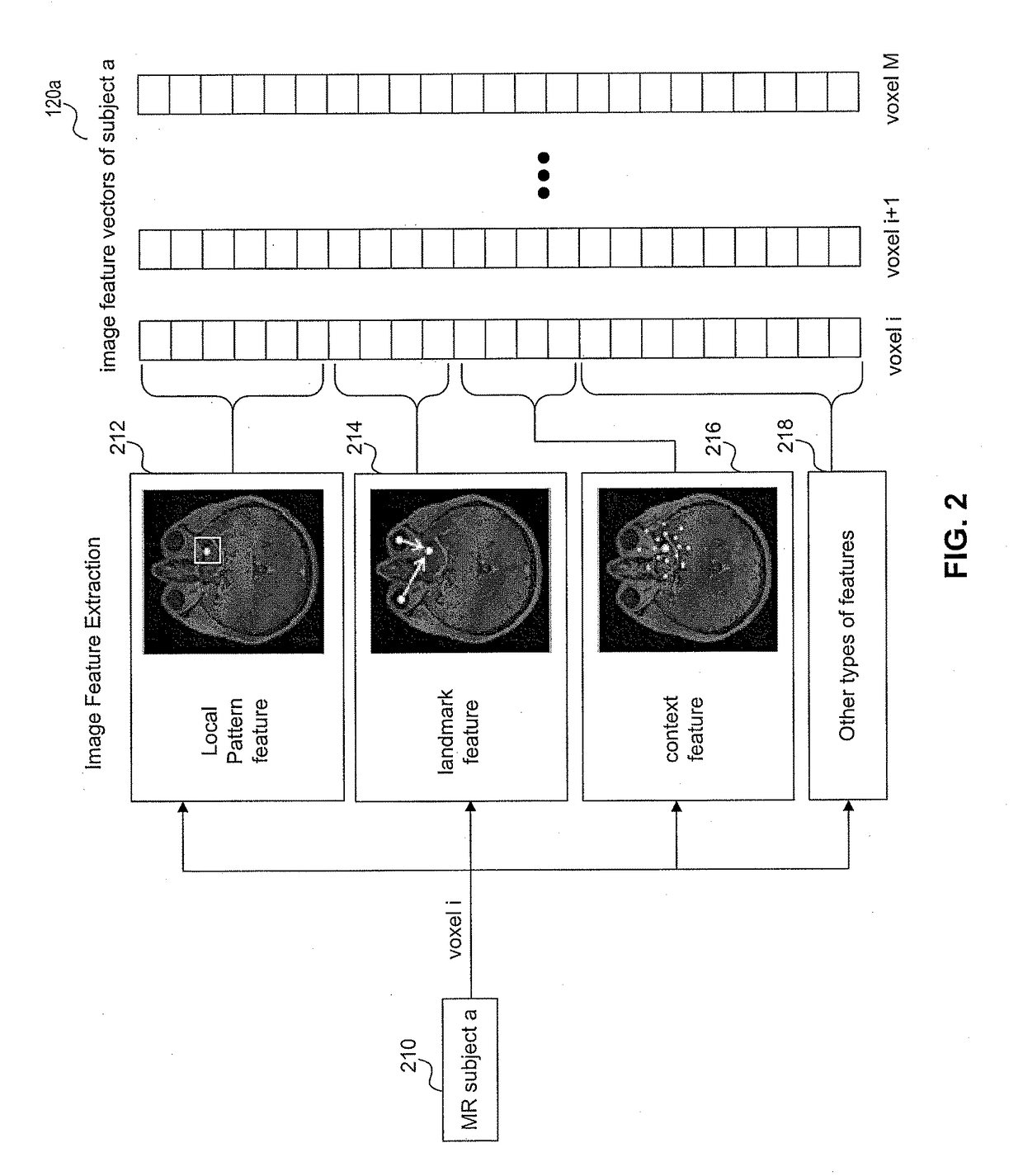Pseudo-ct generation from mr data using a feature regression model
a feature regression and image technology, applied in the field of generating pseudoct images from mr data, can solve the problems of difficult to spare oars close to or overlapping a target tumor, time-consuming trial-and-error process, and complex process
- Summary
- Abstract
- Description
- Claims
- Application Information
AI Technical Summary
Benefits of technology
Problems solved by technology
Method used
Image
Examples
Embodiment Construction
[0033]Reference will now be made in detail to the disclosed embodiments, examples of which are illustrated in the accompanying drawings. Wherever convenient, the same reference numbers will be used throughout the drawings to refer to the same or like parts.
[0034]In one embodiment, in order to create a pseudo-CT image (also referred to as a synthetic CT image or a derived CT image) from an MR image, a learning-based approach that includes a training module and a prediction module is provided. The training module constructs a predictive model (also referred to as a regression model) that can be used to predict a CT value for any given voxel based on features extracted from one or more MR images for a selected location. During training, MR scans and CT scans are collected from a plurality of existing patients to form training data. The training data include pairs of pre-aligned CT and MR images from existing patients. For each pair of images, the corresponding MR and CT values are know...
PUM
 Login to View More
Login to View More Abstract
Description
Claims
Application Information
 Login to View More
Login to View More - R&D
- Intellectual Property
- Life Sciences
- Materials
- Tech Scout
- Unparalleled Data Quality
- Higher Quality Content
- 60% Fewer Hallucinations
Browse by: Latest US Patents, China's latest patents, Technical Efficacy Thesaurus, Application Domain, Technology Topic, Popular Technical Reports.
© 2025 PatSnap. All rights reserved.Legal|Privacy policy|Modern Slavery Act Transparency Statement|Sitemap|About US| Contact US: help@patsnap.com



